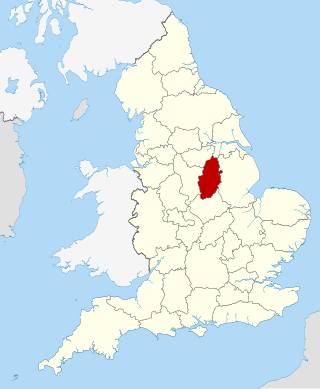| Denbighshire Constabulary | |
|---|---|
| Agency overview | |
| Formed | 1840 |
| Dissolved | 1 October 1967 |
| Jurisdictional structure | |
| Operations jurisdiction | Denbighshire, Wales, United Kingdom |
| General nature | |
| Operational structure | |
| Police officers | 320 (1965) |
Denbighshire Constabulary was the Home Office police force for the county of Denbighshire, Wales from 1840 until 1967.
The Constabulary was formed in 1840, under the County Police Act 1839, to replace the existing parish constables responsible for enforcing the law in local areas. [1] It consisted of divisions or districts including Wrexham “A”, Wrexham “B”, Llanrwst, and Ruthin and Yale. In 1850, the post of Chief Constable was abolished, and the county was divided into two Divisions with a Superintendent for both, with G. M. King at Wrexham and J. Bradshaw at Denbigh. Under the County and Borough Police Act 1856, the position of Chief Constable was reinstated. In 1921, the force gained their first Motor Car. [2] [3] [1]
In 1965, the force had an establishment of 320 and an actual strength of 302. [4] Under the Police Act 1964, it amalgamated with Gwynedd Constabulary and Flintshire Constabulary to form a new Gwynedd Constabulary in 1967, which was renamed North Wales Police in 1974. The Constabulary's archives are held at Denbighshire Archives. [1]

Historic Denbighshire is one of thirteen traditional counties in Wales, a vice-county and a former administrative county, which covers an area in north east Wales. It is a maritime county, bounded to the north by the Irish Sea, to the east by Flintshire, Cheshire and Shropshire, to the south by Montgomeryshire and Merionethshire, and to the west by Caernarfonshire.
Chief constable is the rank used by the chief police officer of every territorial police force in the United Kingdom except for the City of London Police and the Metropolitan Police, as well as the chief officers of the three 'special' national police forces, the British Transport Police, Ministry of Defence Police, and Civil Nuclear Constabulary. The title is also held by the chief officers of the principal Crown Dependency police forces, the Isle of Man Constabulary, States of Guernsey Police Service, and States of Jersey Police. The title was also held, ex officio, by the president of the Association of Chief Police Officers under the Police Reform Act 2002. It was also the title of the chief officer of the Royal Parks Constabulary until this agency was disbanded in 2004.

Bedfordshire Police is the territorial police force responsible for policing the ceremonial county of Bedfordshire in England, which includes the unitary authorities of Bedford, Central Bedfordshire and Luton. Its headquarters are in Kempston, Bedfordshire.

Cambridgeshire Constabulary is the local territorial police force that covers the county of Cambridgeshire and Peterborough unitary authority. It provides law enforcement and security for an area of 1,311 square miles (3,400 km2) and population of 856,000 people, in a predominantly rural county. The force of Cambridgeshire includes the cities of Cambridge, Ely and Peterborough, the market towns of Chatteris, Huntingdon, March, Ramsey, St Ives, St Neots, Whittlesey, and town and Port of Wisbech. Its emblem is a crowned Brunswick star containing the heraldic badge of Cambridgeshire County Council.

Cumbria Constabulary is the territorial police force in England covering Cumbria. As of September 2017, the force had 1,108 police officers, 535 police staff, 93 police community support officers, and 86 special constables.

Derbyshire Constabulary is the territorial police force responsible for policing the county of Derbyshire, England. The force covers an area of over 1,000 square miles (3,000 km2) with a population of just under one million.

Warwickshire Police is the territorial police force responsible for policing Warwickshire in England. It is the second smallest territorial police force in England and Wales after the City of London Police, with only 823 regular officers as of September 2017. The resident population of the force area is 554,002.

North Wales Police is the territorial police force responsible for policing North Wales. Its headquarters are in Colwyn Bay. As of March 2020, the force has 1,510 police officers, 170 special constables, 182 police community support officers (PCSO), 71 police support volunteers (PSV), and 984 staff.

Nottinghamshire Police is the territorial police force responsible for policing the shire county of Nottinghamshire and the unitary authority of Nottingham in the East Midlands area of England. The area has a population of just over 1 million.

Staffordshire Police is the territorial police force responsible for policing Staffordshire and Stoke-on-Trent in the West Midlands of England. It is made up of eleven Local Policing Teams, whose boundaries are matched to the nine local authorities within Staffordshire.

Lincolnshire Police is the territorial police force covering the non-metropolitan county of Lincolnshire in the East Midlands of England. Despite the name, the force's area does not include North East Lincolnshire and North Lincolnshire, which are covered by Humberside Police instead.

The County Police Act 1839 was an Act of the Parliament of the United Kingdom. It was one of the Police Acts 1839 to 1893. The Act enabled Justices of the Peace in England and Wales to establish police forces in their counties. The Act was not compulsory, and constabularies were only established in 25 out of 55 counties by 1856, when the County and Borough Police Act 1856 made their provision mandatory.

The Police Act 1964 was an Act of the Parliament of the United Kingdom that updated the legislation governing police forces in England and Wales, constituted new police authorities, gave the Home Secretary new powers to supervise local constabularies, and allowed for the amalgamation of existing forces into more efficient units.
Flintshire Constabulary was the Home Office police force for the county of Flintshire, Wales, from 1856 until 1967.
Walsall Borough Police was a police force in the Borough of Walsall, then in Staffordshire, in England, from 1832–1966.
Sir Walter Stansfield was a British police officer and soldier who was Chief Constable of Denbighshire Constabulary (1964–67) and Derbyshire Constabulary (1967–79).
The Denbighshire Militia, later the Royal Denbighshire Rifles was an auxiliary regiment reorganised in the Welsh county of Denbighshire during the 18th Century from earlier precursor units. Primarily intended for home defence, it provided a contingent for service in France in the closing stages of the Napoleonic War. After a series of short-lived mergers with other Welsh militia regiments it became part of the Royal Welsh Fusiliers, It served as a Special Reserve training unit in World War I. After 1921 the militia had only a shadowy existence until its final abolition in 1953.
Caernarvonshire Constabulary was the Home Office police force for the county of Caernarvonshire, Wales from 1856 until 1950.
Merionethshire Constabulary was the Home Office police force for the county of Merionethshire, Wales from 1856 until 1950.
Anglesey Constabulary was the Home Office police force for the county of Anglesey, Wales from 1856 until 1950.